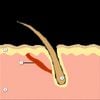community 11 Months Topical Fin 0.3%+Min 6% daily, Last 2 Months Added Min 5% Foam at Night, Late 30s Male Progress
The user "_Mad_Jack_" shared their progress pictures of using topical finasteride and minoxidil for 11 months. They experienced good hair retention and increased overall hair count, but no regrowth of the hairline. They are considering switching to oral finasteride and microneedling for better results. Testicular pain was a side effect experienced during the treatment. Another user mentioned getting a hair transplant to cover their crown.

